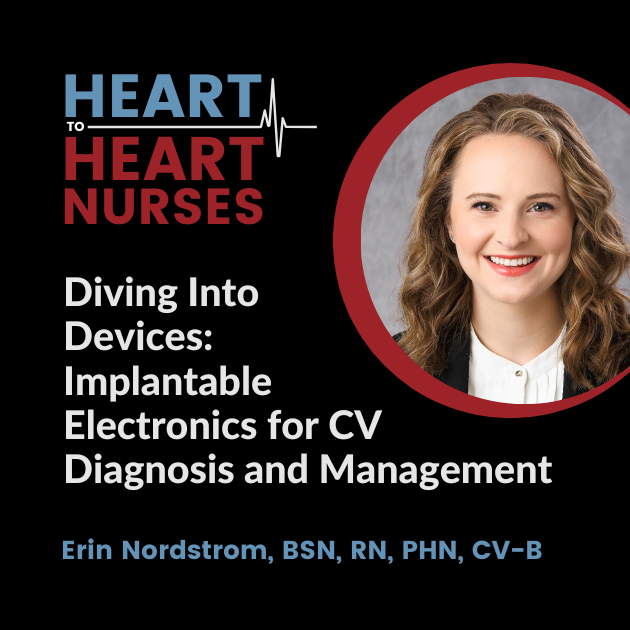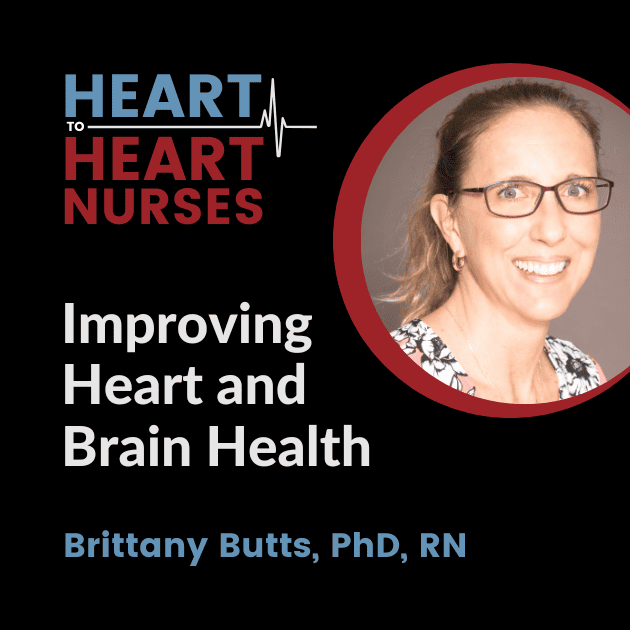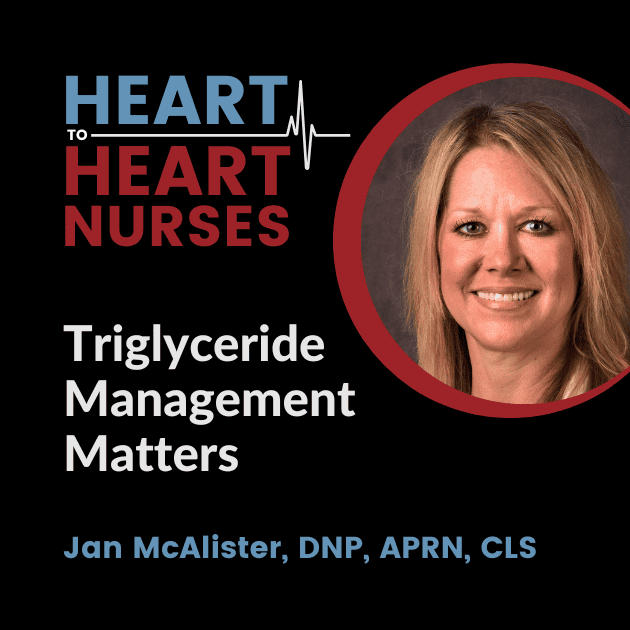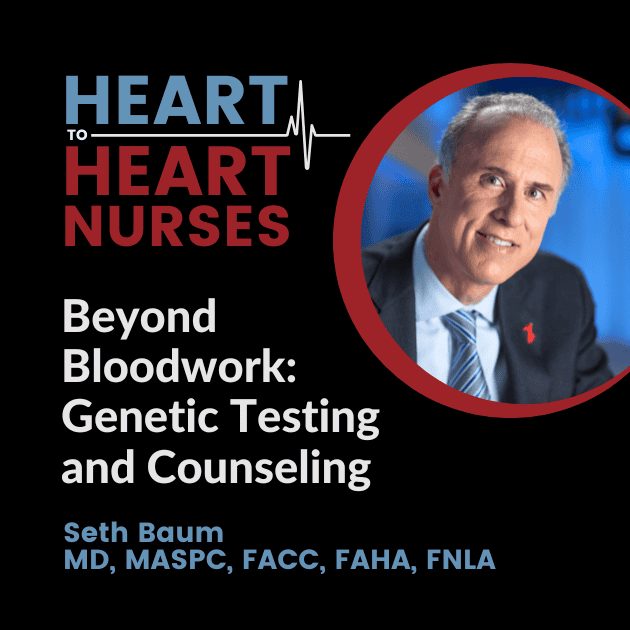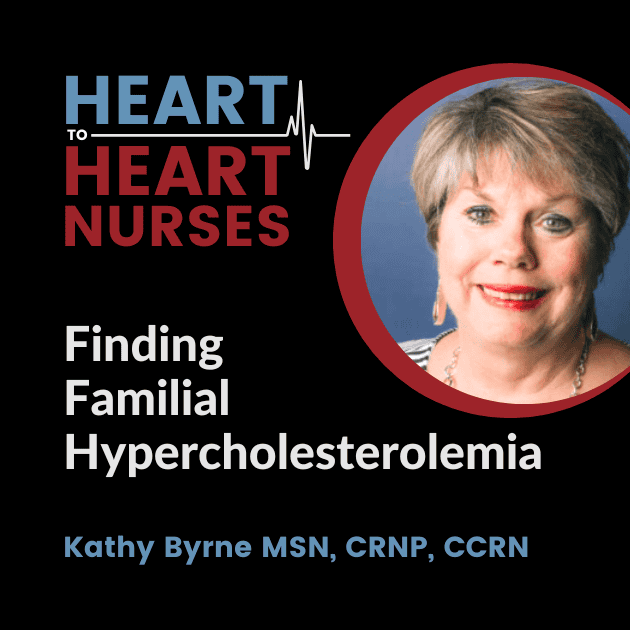Episode Resources
Geralyn (00:20)
Welcome to today's episode, the first of a three-part series that explores familial hypercholesterolemia, also known as FH. Today, I'm pleased to be joined by Kathy Byrne. Kathy, would you please introduce yourself to our audience?
Kathy Byrne (00:33)
Certainly, happy to be with you today for this podcast on finding familial hypercholesterolemia. And a big thank you PCNA for the opportunity to discuss this most important topic. I'm a nurse practitioner at the Johns Hopkins Hospital where I care for individuals with lipid disorders, both in the Ciccarone Preventive Cardiology Clinic where I see adults with lipid disorders, and pediatric cardiology, where I see children and young adults with lipid disorders as well. Both clinics have a significant number of patients with familial hypercholesterolemia, including both heterozygous and homozygous familial hypercholesterolemia.
Geralyn (01:16)
Thanks so much for that great introduction, and I know that you are quite adept at speaking about this topic, but I'm hoping you could help our audience understand a little bit more from a genetics perspective. What is the difference between homozygous and heterozygous FH?
Kathy Byrne (01:17)
Certainly. Well, familial hypercholesterolemia is a genetic condition. It's inherited in an autosomal codominant pattern that results in very elevated LDL cholesterol. And if left undiagnosed, untreated, or undertreated, it can lead to catastrophic cardiovascular events, including myocardial infarction and/or death.
Now most patients are heterozygous for this common condition, meaning they have one normal allele and one that is mutated or more commonly today called a variant or a variance in an allele. This occurs in approximately one out of every 200 to 220 individuals.
On the other hand, patients with homozygous familial hypercholesterolemia have two variants or mutations in their alleles. It occurs much less frequently, and it's estimated to be one out of every 300,000 individuals. Patients present with a much more severe clinical picture or, as we often refer to it as, a phenotype, and they manifest cardiovascular events prior to 30 years of age if untreated. And as well, these cardiovascular events can occur in children.
Now it occurs equally in both men and women, but there are some racial differences, and they exist with African Americans having a slightly higher prevalence than Hispanics or Caucasians. There's also increased frequency or occurrence in particular populations and that's due to what we call the founder effects where certain populations group together. So, we see it in French Canadians, South African Afrikaners, Ashkenazi Jews, Tunisians, Indians, Christian Lebanese, Icelanders, and Finns.
Now with one out of every 200 individuals having FH, it suggested that there are up to three, excuse me, up to 34 million people worldwide who have FH. That's an awful lot of people, 34 million.
So, it's imperative to review family history as individuals with FH, be it heterozygous or homozygous. We'll often see that their first-degree relatives, so siblings, parents, children, we want to see what their lipid levels are and if they have premature coronary disease. Now by premature, I mean less than 55 years of age in men and less than 65 years of age in women. Or they can have a history of elevated lipids, particularly LDL, or both premature coronary disease as well as hyperlipidemia.
Geralyn (04:39)
So, I really appreciate the fact that you've covered kind of the genetic aspect of this and having one or two alleles that have those variants on those. But as a clinician, what signs or symptoms - you've talked a little bit about the actual rates of having higher lipid levels and what the rates are, but what does that look like in clinical practice? How would I know if somebody has heterozygous or homozygous? Are the diseases sometimes overlooked or attributed to other disease states?
Kathy Byrne (05:07)
Yeah, that's a great question. So first of all, let me just say to you the accumulation of that LDL lipoprotein, which carries the cholesterol throughout the body, is problematic.
When the job of the circulating LDL cholesterol is completed, it returns to the liver for recycling. And if that recycling is impaired, the LDL then builds up within the arteries. So it becomes extremely important to find or detect FH in order to treat and prevent these cardiovascular events.
So let's take a look at the clinical diagnosis. The clinical diagnosis is focused around LDL cholesterol levels, family history, and physical findings. So with the LDL cholesterol, we want to suspect it when the LDL cholesterol is typically in adults, 190 milligrams per deciliter or greater. However, folks who have lower LDL levels with a strong family history and or physical findings can also allow you to confer a diagnosis.
We suspect homozygous familial hypercholesterolemia when untreated LDL cholesterol levels are greater than 500 milligrams per deciliter. Or greater than 300 milligrams per deciliter if the patients are on maximal lipid-lowering therapies, as well as physical findings of cholesterol deposits in the first decade of life, as well as a strong family history.
So let's look at some of these physical findings. And they focus around xanthomas. So patients can have what we call extensor tendon xanthomas, and we see them oftentimes in the hands. They can also have tuberous or planar xanthomas. Tuberous oftentimes look like groups of grapes, oftentimes on the elbow. Planar xanthomas are flat deposits and you can see them in between the fingers or in between the toes as well. As well as Achilles tendon xanthomas, and this would be thickening in the Achilles tendons. Sometimes you can actually see an actual lump or a bump, but most importantly it's that you feel along the Achilles tendon and you feel for thickening So you say, “Well, how do I know if it's thickened?”, what you have to do is practice feeling an individual who does not have FH feel their Achilles tendons and after a period of time it's like with any other physical findings, you will then be able to recognize that [as] abnormal.
You may also see xanthelasmas, and xanthelasmas are fat deposits that are surrounding the upper eyelids or the lower eyelids. It's not diagnostic, but it certainly can clue you into the fact that the patient may have familial hypercholesterolemia. And then positive corneal arcus. This is a ring around the cornea, around the outer edge, but you need to see it before the age of 45. Certainly, if you're 85, we expect a lot of deposits around the eye, and that's certainly fine. But it needs to be in the upper as well as the lower. So those are our physical findings.
As well as those cholesterol deposits in the tendons and the joints can cause tendonitis and significant joint pain. So that people will complain, you know, I go to walk and it's just very difficult. Now the absence of physical findings, however, does not rule out familial hypercholesterolemia.
Geralyn (09:17)
We have been talking with Kathy Byrne about FH, and we will be right back after a short break.
We are back to continue our discussion about familial hypercholesterolemia. Before the break, we discussed the signs and symptoms of heterozygous FH and homozygous FH.
So, what other lab tests might we need, Kathy, because some of those descriptors that you gave as type of clinical indicators might lead us to not think that it's FH unless we had some supporting documentation or some supporting lab work. So, what would that look like?
Kathy Byrne (09:48)
Well, certainly would need lipid panels, okay? And the National Heart, Lung, and Blood Institute really recommends that screening begin in children between the ages of 9 and 11 before they enter puberty, and then again every five years.
However, if there is a family history of familial hypercholesterolemia or very elevated lipid levels or family history of early onset coronary disease, then you can test individuals as young as two years of age. And if a child has an LDL cholesterol level of 160 milligrams per deciliter or greater, then we suspect familial hypercholesterolemia.
If a parent has FH, then each child has a 50% chance of having FH.
If both parents have FH, then there's a one out of four chance that that child will have homozygous familial hypercholesterolemia. Remember, that's when the LDL cholesterol levels are certainly well above 500. Adults, we suspect FH with an LDL cholesterol of 190 or above.
Geralyn (11:11)
Kathy, you've done an amazing job describing for our audience about the genetic aspects of this disease and the importance of family history. But because of that genetic condition that this disease is, I suspect that genetic testing and counseling are also very important in the process of diagnostics and also the process of management. Is that correct?
Kathy Byrne (11:33)
So genetic testing is an important aspect of identifying FH and is recommended to be done with a genetic counselor if possible. And the good news is that most of the insurance companies today are now covering genetic testing. And if they don't, they will also oftentimes work with a genetic counselor to provide financial support.
A genetic counselor can explain how the condition is inherited in detail. A very detailed family history is obtained, which should include all first-degree relatives, including siblings, parents, aunts and uncles, and grandparents whenever possible.
I also like to dig a little bit deeper into the family history to include great [grand]parents and or second-degree relatives. Now typically when the genetic counselor sees the patient, a swab is taken of the inside of the cheek and those results are sent off and then they are then reported in about three to four weeks. Most of the genetic companies will also work with families to provide financial support.
It's the impairment of the clearance of the LDL due to that mutation or variant, most commonly in the LDL receptor gene. More than 1,400 variants have been identified in the LDL receptor, of which approximately 80% of those identified will likely result in cardiovascular disease. Variants in APO-B occur in about 5 % of individuals with familial hypercholesterolemia. And a gain of function in the PCSK9 protein occurs in approximately in 1% of those individuals with familial hypercholesterolemia.
And finally, there's another mutation or variant and that's in the LDLRAP or LDL receptor adapter protein. Now this is an autosomal recessive form of familial hypercholesterolemia. It's very rare and you'll find that an individual will have very high lipid levels but the parents will have normal levels.
Individuals with homozygous familial hypercholesterolemia are more severely affected than heterozygotes, and they are classified as either receptor negative, meaning they have less than 2% of residual receptors, or they are receptor defective, and they have anywhere between 2 and 25% residual activity. This is important because receptor defective individuals may be somewhat responsive to statins and other lipid-lowering therapies, whereas if they are receptor negative, there will be no response to the statin or other lipid-lowering therapies. LDL receptor, negative patients always have higher LDL levels and they have a worse clinical prognosis.
Geralyn (14:52)
Kathy, you have given us an abundance of information for us to take and use in clinical practice as we're looking at individual patients. But could you tell me what your one key takeaway would be for our audience?
Kathy Byrne (15:03)
Yes, the key takeaway remains the importance of identifying FH at the youngest age possible. This is so that treatment can be initiated and LDL cholesterol reduced. And with the reduction of the LDL levels, help to prevent devastating cardio events. So you can prevent MIs or other ischemic events.
Parents should be very proactive and ask their pediatricians, their children's pediatricians to test their children, and adult providers should always suggest that patients with FH have their children and other relatives tested. In other words, that cascade testing be done.
Geralyn (15:47)
We are so incredibly grateful to Kathy Byrne for spending time with us today and sharing her expertise about familial hypercholesterolemia. As a reminder, this is the first of a three-part mini-series on the topic. And for more information, we encourage our audience to visit our show notes and to also watch or listen to episodes two and three of this mini-series. We'd like to thank Regeneron Pharmaceuticals for their unrestricted grant funding for this particular mini-series. This is your host, Geraldine Warfield, and we will see you next time.
Subscribe Today
Don't miss an episode! Listen to the Heart to Heart Nurses podcast on your favorite podcast listening service.







